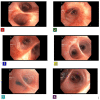From Euphoria to Emergency: Exploring the Role of K2/Spice in Diffuse Alveolar Hemorrhage
- PMID: 37581157
- PMCID: PMC10423625
- DOI: 10.7759/cureus.41887
From Euphoria to Emergency: Exploring the Role of K2/Spice in Diffuse Alveolar Hemorrhage
Abstract
Marijuana or cannabis has been one of the most widely used recreational drugs, in the United States. However, a sinister counterpart has emerged in recent times: K2/Spice, a synthetic rendition of tetrahydrocannabinol (THC), capturing increasing popularity. Alarming reports have linked this synthetic compound to a multitude of life-threatening complications, ranging from acute kidney injury (AKI) from direct nephrotoxicity to cardiac arrest. Here we present the case of a 34-year-old man who presented with hemoptysis, later found to have diffuse alveolar hemorrhage (DAH) on the investigation after smoking K2/Spice successfully treated with a course of intravenous steroids. The case presented underscores the urgent need for increased awareness about the potential complications associated with synthetic compounds like K2/Spice, such as diffuse alveolar hemorrhage, and the importance of developing effective treatment strategies.
Keywords: acute respiratory distress syndrome (ards); bilateral pulmonary infiltrates; cannabis use; diffuse alveolar hemorrhage; e-cigarette and vaping product use associated lung injury (evali); hemoptysis; k2/spice; lung injury; synthetic cannabinoids; synthetic cannabis.
Copyright © 2023, Allena et al.
Conflict of interest statement
The authors have declared that no competing interests exist.
Figures




References
-
- State Medical Cannabis Laws. [ Jun; 2023 ]. 2023. https://www.ncsl.org/health/state-medical-cannabis-laws https://www.ncsl.org/health/state-medical-cannabis-laws
-
- Investigation updates and clinical recommendations for E-cigarette, or vaping, product use associated lung injury (EVALI) [ Jun; 2023 ]. 2019. https://health.ny.gov/prevention/tobacco_control/docs/2019-11-8_health_a... https://health.ny.gov/prevention/tobacco_control/docs/2019-11-8_health_a...
-
- Vaping-related acute parenchymal lung injury: a systematic review. Jonas AM, Raj R. Chest. 2020;158:1555–1565. - PubMed
Publication types
LinkOut - more resources
Full Text Sources
